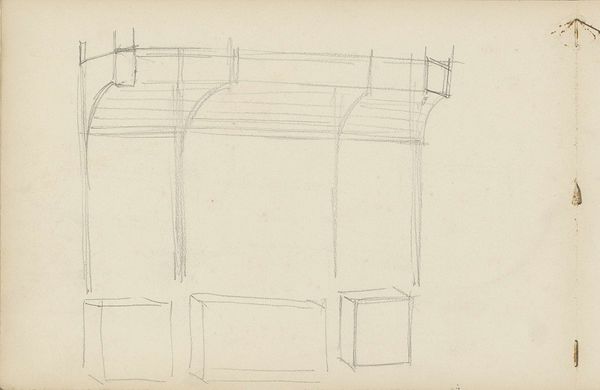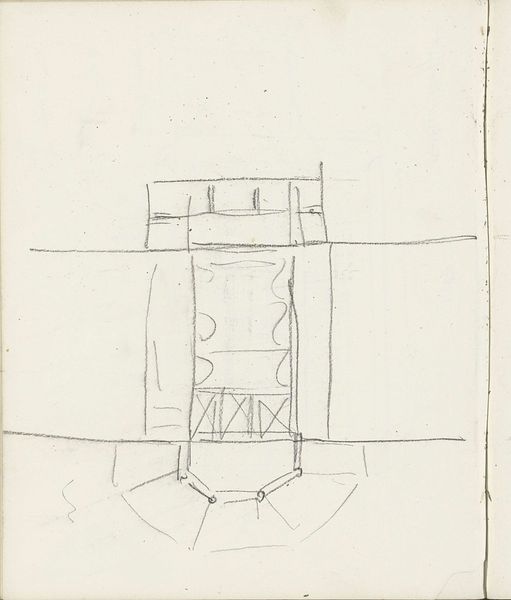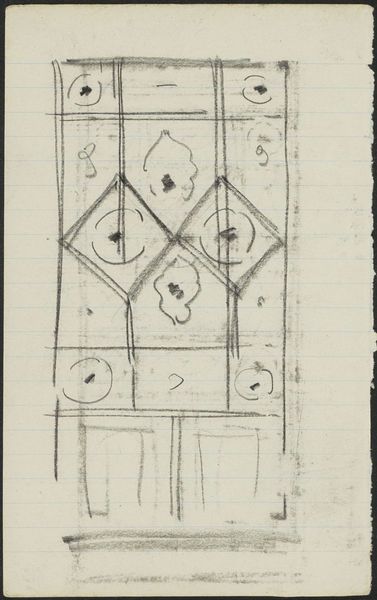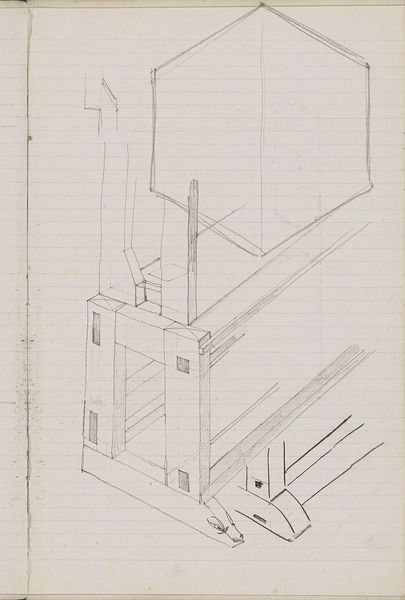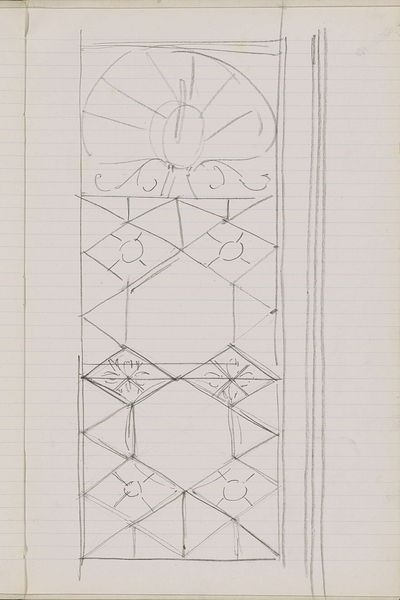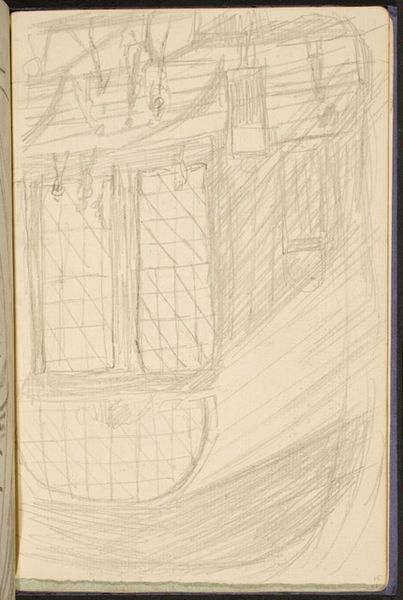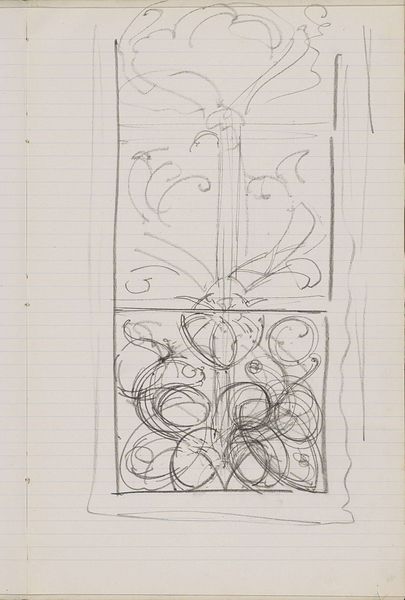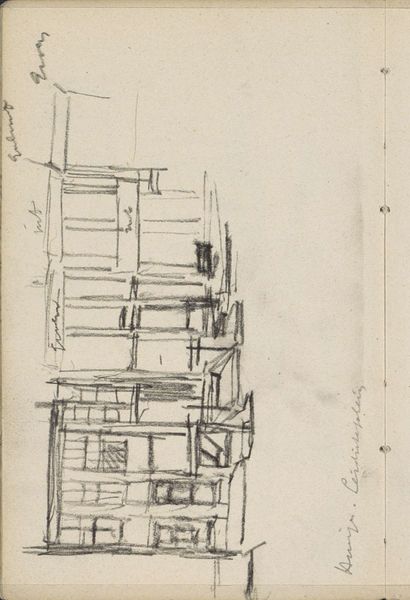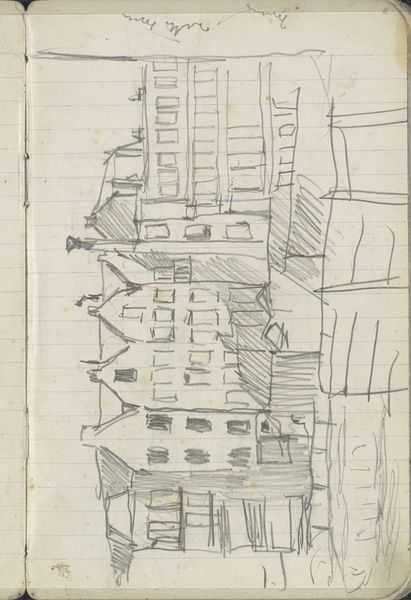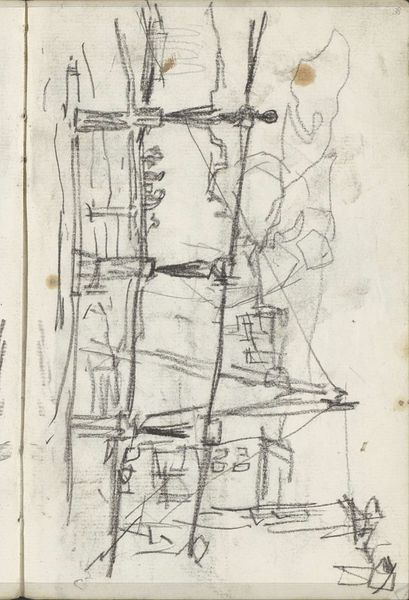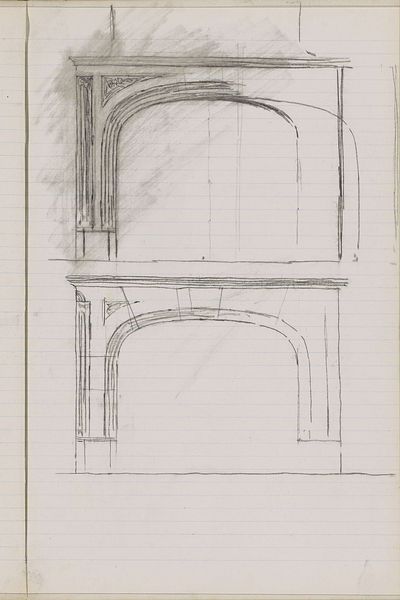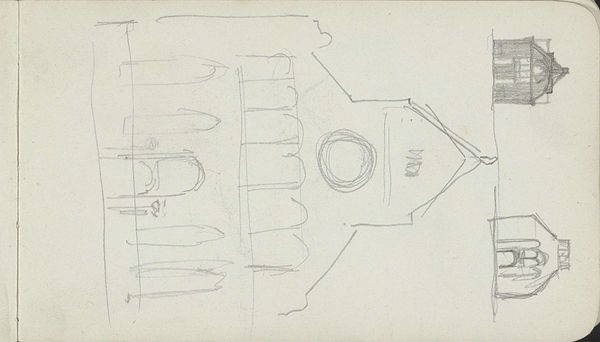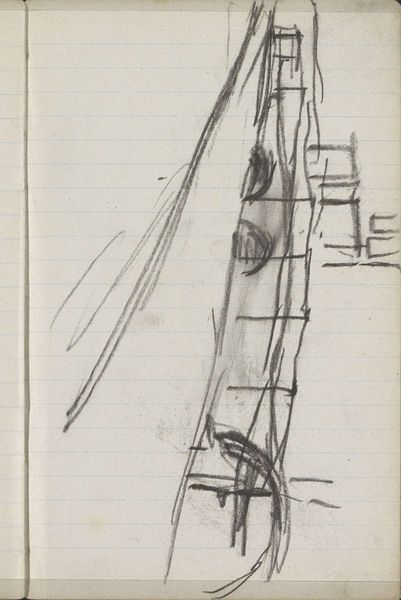
drawing, paper, pencil
#
drawing
#
pen sketch
#
paper
#
form
#
geometric
#
pencil
#
line
Dimensions: height 166 mm, width 105 mm
Copyright: Rijks Museum: Open Domain
Curator: Gerrit Willem Dijsselhof created this work, "Ontwerp voor een glas-in-loodvenster," sometime between 1876 and 1924. It's currently housed here at the Rijksmuseum. Made using pencil and pen on paper. Editor: My first impression is one of fragility. Those delicate pencil lines sketching out geometric shapes seem so vulnerable, so tentative. It feels like a fleeting idea captured on the page. Curator: That's an interesting perspective. It makes me think about the laborious process of crafting stained glass. Imagine the meticulous work involved in cutting and assembling all those individual pieces based on this sketch. There’s a real tension here between the ease of the initial sketch and the intensive labor of realizing the design in glass. Editor: Precisely. And who would be undertaking that labor? Were these anonymous artisans or celebrated craftspeople? Exploring that dynamic and the conditions they worked under are essential for a deeper understanding. The power dynamics at play between the artist, the patrons, and the actual makers… Curator: This was also during a period of renewed interest in craft and design as an alternative to mass-produced goods. We see the Arts and Crafts movement championing a return to handmade production. Consider what materials are privileged here: The very basic supplies needed for rendering an image into something larger. The drawing itself becomes evidence of artistic labor. Editor: Yes, it begs the question of accessibility. Who gets to commission, create, and own such pieces? Who is shut out from the possibility of working with beautiful material? Does the final, more luxurious artwork promote particular ideals about the kind of space stained glass inhabits? Curator: We see a confluence of aesthetics and practicality here, bridging what one might see as high art with very specialized manufacture of something for use. Dijsselhof gives us access to the origins of form. Editor: This simple sketch opens up a much wider conversation, doesn't it? About design, labor, and the socio-political forces shaping artistic production during that time. I appreciate seeing its connection with access to art, too. Curator: Indeed, seeing such a simple drawing lets us recognize that all great work begins with intention, however spare or simple. Editor: Exactly, from humble beginnings in the materials available to us all.
Comments
No comments
Be the first to comment and join the conversation on the ultimate creative platform.
